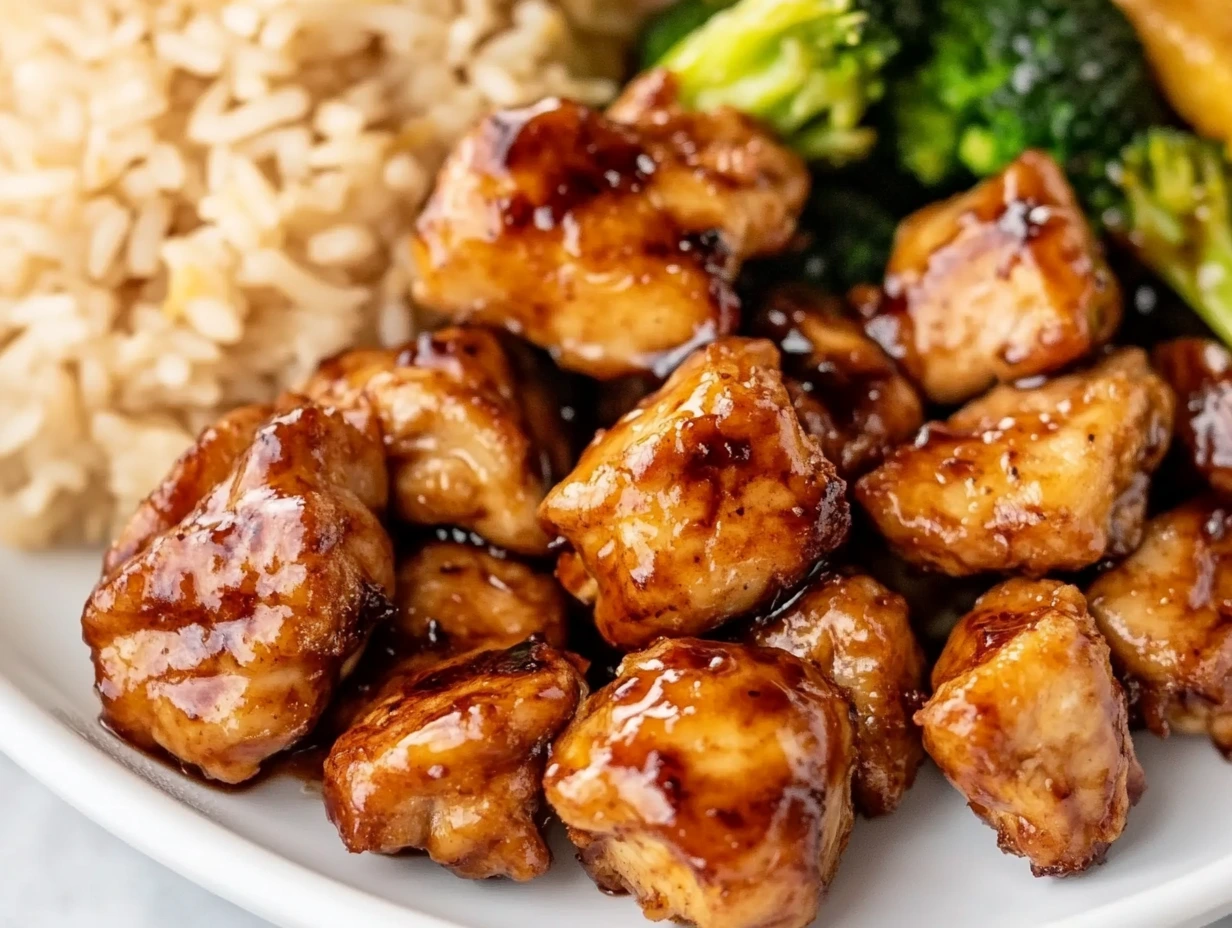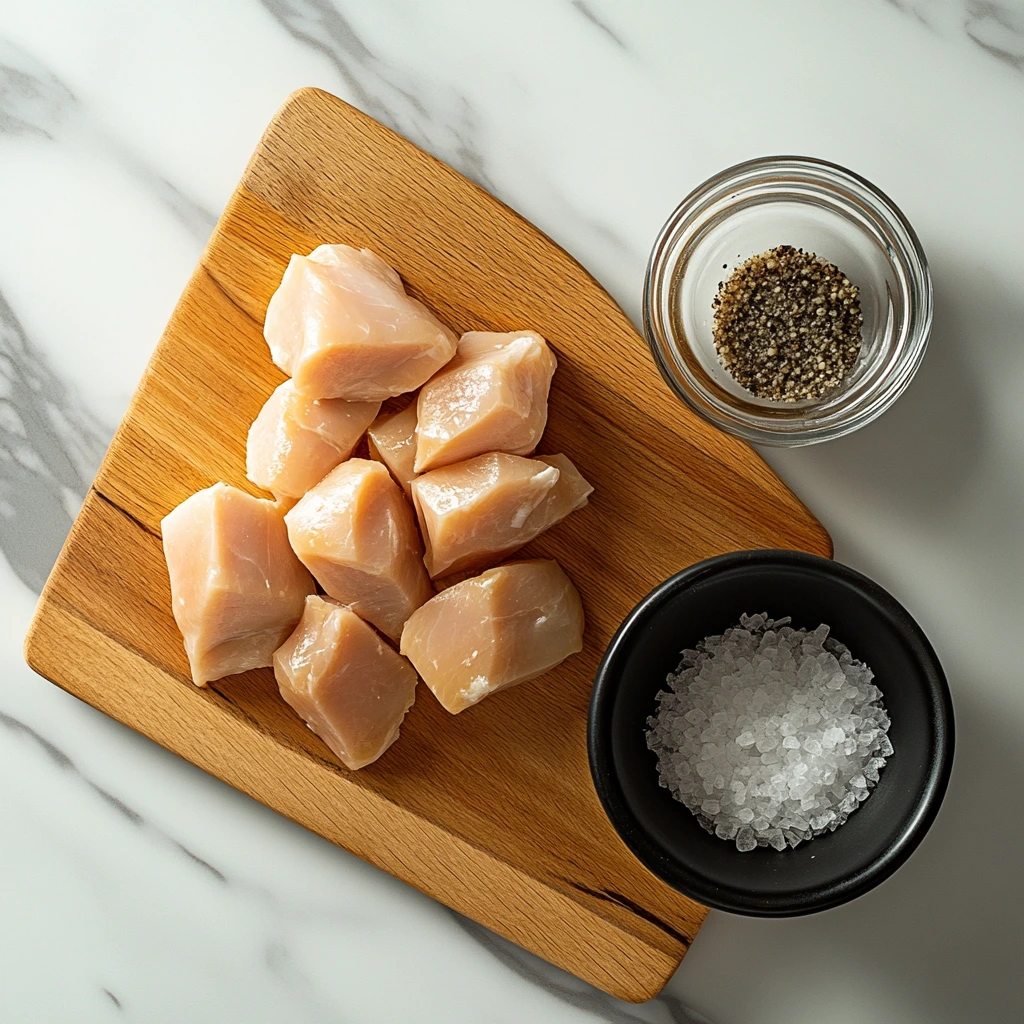If you’ve ever been to a Japanese steakhouse and found yourself mesmerized by the sizzling action of the hibachi grill, then this recipe is going to hit all the right notes. There’s something so satisfying about the aroma of garlic hitting hot oil, the sound of chicken searing to perfection, and that savory umami flavor that coats every bite. Trust me when I say, once you make this Juicy Hibachi Chicken at home, you’ll wonder why you ever paid restaurant prices for it.
I’ve been making this dish for years, and it’s one of those go-to recipes that never fails to impress—whether I’m serving it to guests or just whipping it up for a cozy dinner at home. It’s quick, it’s simple, and the flavors are so bold and crave-worthy. Plus, it all comes together in under 30 minutes, which makes it a total weeknight win.
Let’s dive right into how you can bring those sizzling hibachi flavors right into your own kitchen—with no need for a teppanyaki grill or juggling spatulas.
Ingredients You’ll Need
For the Chicken:
-
2 large boneless, skinless chicken breasts (cut into bite-sized cubes)
-
1 tablespoon vegetable oil
-
1 tablespoon sesame oil
-
1 tablespoon soy sauce
-
1 tablespoon butter
-
1 teaspoon garlic, minced
-
Salt and black pepper to taste
Optional Yum Yum Dipping Sauce:
-
¼ cup mayonnaise
-
1 tablespoon ketchup
-
1 teaspoon sugar
-
1 teaspoon rice vinegar
-
½ teaspoon garlic powder
-
1 tablespoon water
Why This Hibachi Chicken Works
This isn’t just any stir-fry chicken recipe. The combination of sesame oil, butter, and soy sauce gives the chicken that distinctive hibachi flavor—rich, slightly nutty, and deeply savory. The quick sear locks in all the juices while building up that beautiful golden crust, and the garlic brings everything together with an irresistible aroma.
And let’s talk about that optional dipping sauce—yes, it’s totally inspired by the famous “yum yum” sauce you get at restaurants. Creamy, tangy, and a little sweet, it adds a whole other layer of flavor if you’re into dipping. I usually make a small batch and let everyone drizzle or dip as they like.
STEP 1: Prep Your Chicken and Heat the Skillet
The key to getting that classic hibachi sear is to start with a hot pan—don’t skip this step. You want your skillet or flat griddle to be nice and hot before the chicken hits it.
First, take your boneless skinless chicken breasts and cut them into bite-sized cubes. I like to pat them dry with a paper towel to make sure they sear instead of steam. Then season them generously with salt and black pepper.
Set your skillet over medium-high heat. Add the vegetable oil and sesame oil and wait until they’re shimmering. That shimmer means it’s hot enough to start cooking.
STEP 2: Sear the Chicken for That Golden Crust
Now it’s time to let the magic happen. Place the chicken cubes into the pan in a single layer. Do not move them right away—give them 2 to 3 minutes to sear properly and develop that rich golden-brown crust.
Once the underside is nicely browned, give them a stir and let them cook for another 3 to 4 minutes. At this point, your chicken should be nearly cooked through but still juicy.
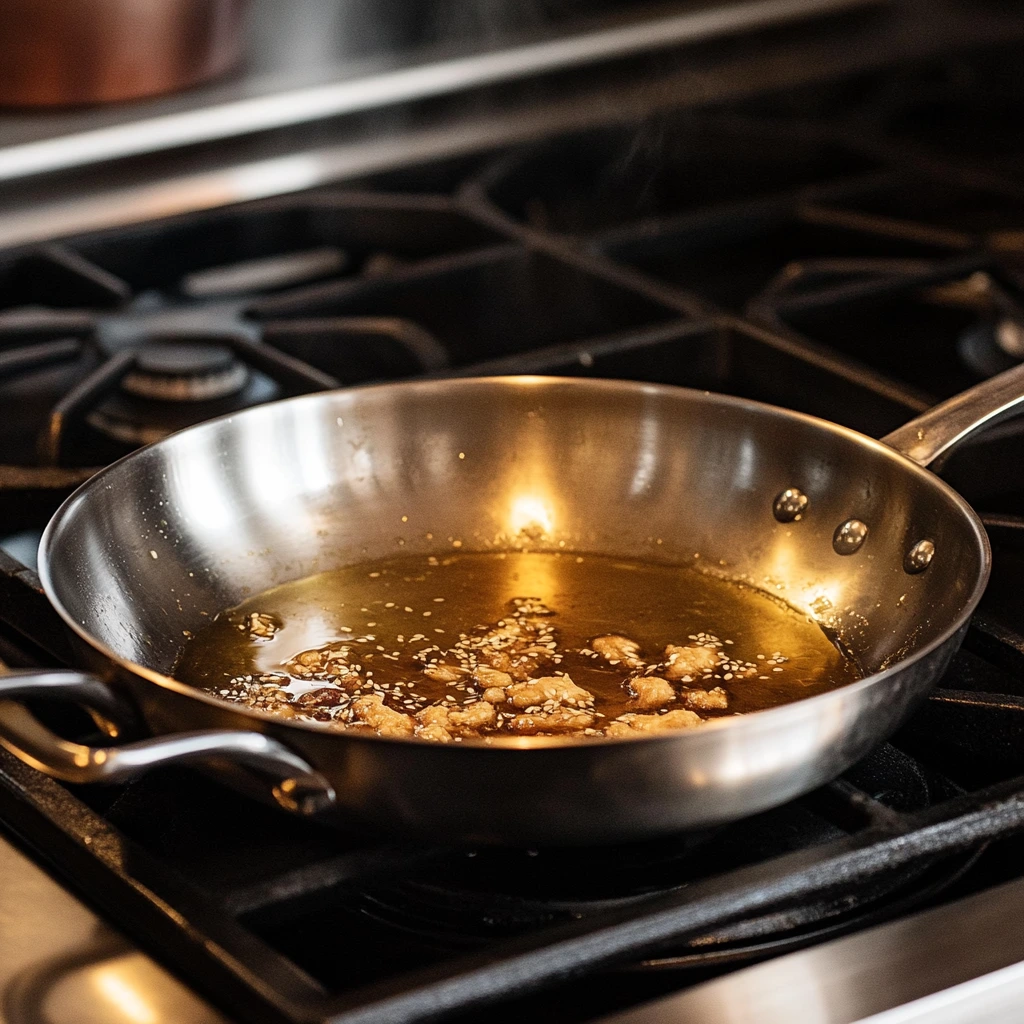
STEP 3: Add Flavor Boosters – Butter, Garlic, and Soy Sauce
When the chicken is almost done, it’s time to level up the flavor. Add the butter, minced garlic, and soy sauce right into the skillet. Stir everything together so that the chicken gets beautifully coated in that garlicky, buttery glaze.
This step only takes 1 to 2 more minutes of cooking—just enough for the garlic to mellow slightly and the sauce to cling to every piece of chicken. It smells amazing, and honestly, this is when everyone in the house starts asking, “What are you cooking?”
Juicy Hibachi Chicken: The Sizzle Continues – Sauce, Serving Tips & Easy Variations
Welcome back! By now your kitchen probably smells incredible—thanks to that buttery garlic-soy glaze working its magic on perfectly seared chicken. In this part, we’re going to wrap up the cooking process, whip up a quick and creamy dipping sauce (totally optional but so worth it), and talk through some smart serving ideas and helpful tips to really take this dish to the next level.
Whether you’re serving this up for a casual weeknight dinner or plating it beautifully for guests, the final touches are what make this Juicy Hibachi Chicken feel like something special. So let’s get into it.
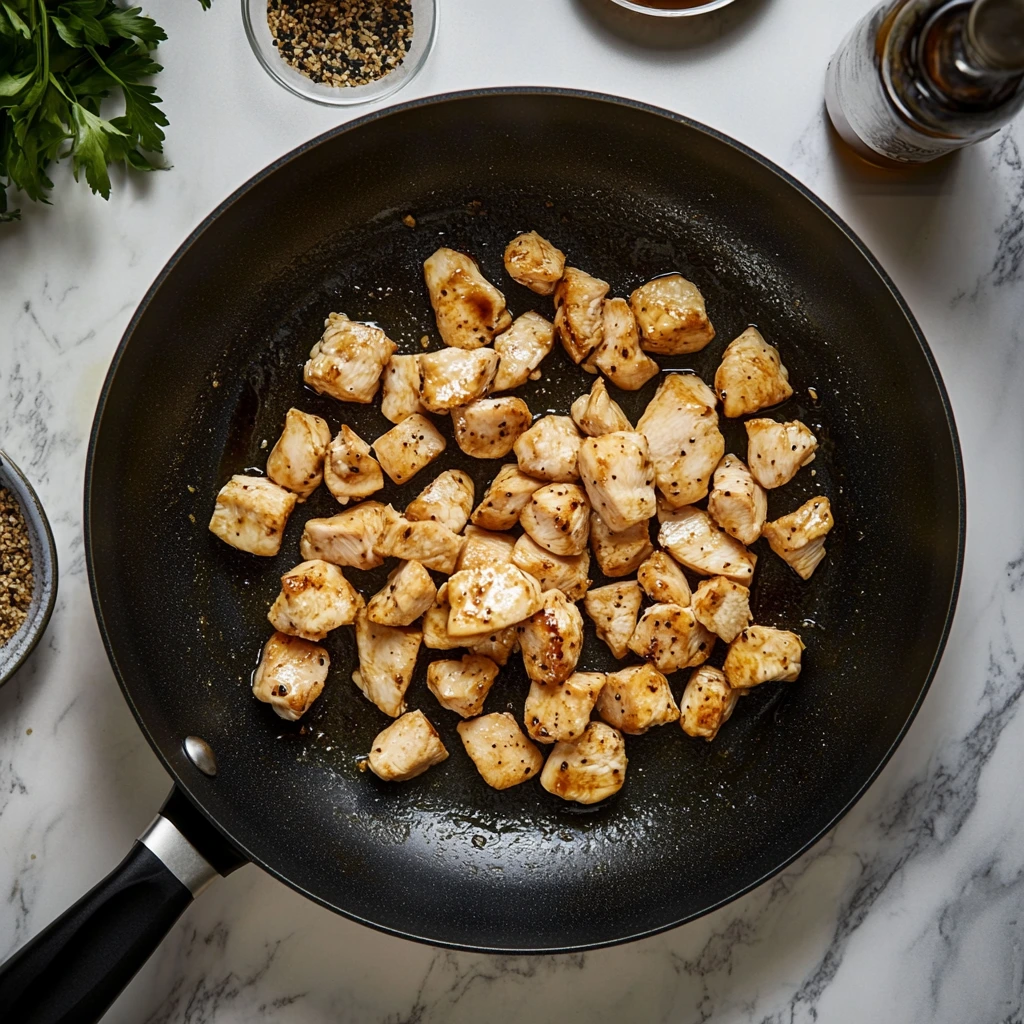
STEP 4: Whip Up the Yum Yum Dipping Sauce (Optional, But Recommended)
Now technically, this sauce isn’t part of the traditional hibachi chicken served in Japan, but if you’ve ever been to an American-style Japanese steakhouse, you know exactly what I’m talking about. That creamy, slightly sweet, slightly tangy sauce they give you for dipping everything from shrimp to steak—it’s addictive.
And guess what? You can make it at home in just a minute or two with ingredients you probably already have.
Here’s how:
In a small bowl, whisk together:
-
¼ cup mayonnaise
-
1 tablespoon ketchup
-
1 teaspoon sugar
-
1 teaspoon rice vinegar
-
½ teaspoon garlic powder
-
1 tablespoon water (to thin it out)
Stir until smooth and creamy. That’s it! You can refrigerate it for 10–15 minutes to let the flavors meld, but honestly, it’s delicious straight away.
This dipping sauce is especially great if you’re serving the chicken with rice or veggies—it adds a nice creamy contrast to the bold umami flavor of the chicken.
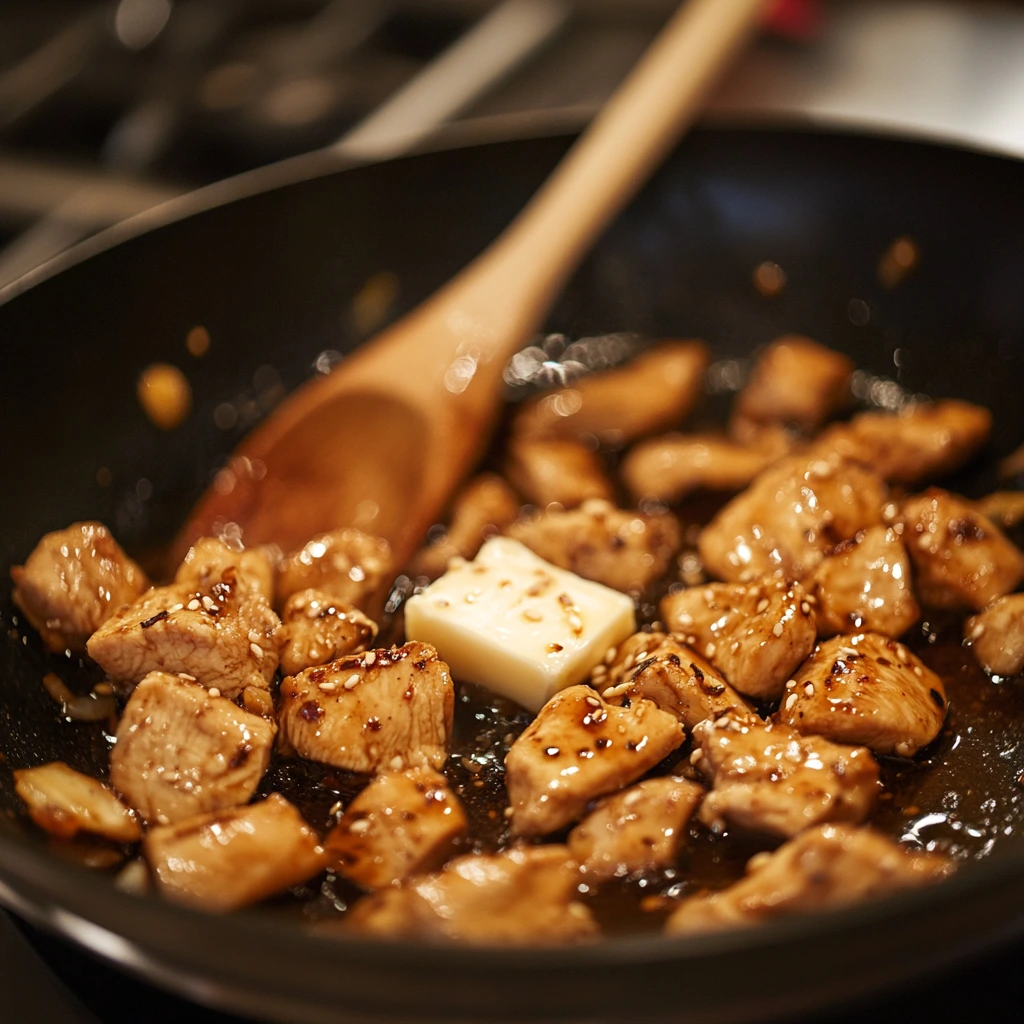
Serving Suggestions: Make It a Full Hibachi-Style Meal
One of the best things about this dish is how versatile it is. Here are a few ways to serve your Juicy Hibachi Chicken to turn it into a full restaurant-style meal:
-
With Fried Rice: Classic combo. You can use leftover rice and toss it with soy sauce, scrambled eggs, scallions, and a little sesame oil.
-
With Sautéed Veggies: Think zucchini, mushrooms, onions, and carrots. Just give them a quick toss in a hot skillet with a little oil, salt, and pepper.
-
Over Noodles: Lo mein-style noodles or even plain soba noodles work great. Drizzle with a little soy sauce and sesame oil to keep things simple.
-
In a Bowl: Create a hibachi chicken bowl with rice, veggies, and a drizzle of that yum yum sauce. Great for meal prep or quick lunches.
You really can’t go wrong here—this chicken plays well with just about any side.
Tips to Nail This Recipe Every Time
Making restaurant-quality hibachi chicken at home doesn’t require fancy equipment, but a few smart tips can make a big difference in flavor and texture:
1. Don’t overcrowd the pan.
If you’re doubling the recipe, cook the chicken in batches. Too much chicken at once can drop the pan’s temperature and lead to steaming instead of searing.
2. Let the chicken rest before cooking.
If you have time, season the chicken and let it sit at room temperature for 10–15 minutes before cooking. It helps it cook more evenly and stay juicier.
3. Use high heat.
That sizzling sound is your friend—it means you’re getting that beautiful browning that builds flavor. A hot skillet is key here.
4. Don’t skip the butter.
The combination of butter and soy sauce gives that signature hibachi flavor. The butter adds richness and helps everything glaze beautifully.
5. Want more sauce? Double it.
If you like your chicken extra saucy, feel free to double the garlic, soy sauce, and butter at the end. The chicken soaks it up and it’s absolutely delicious.
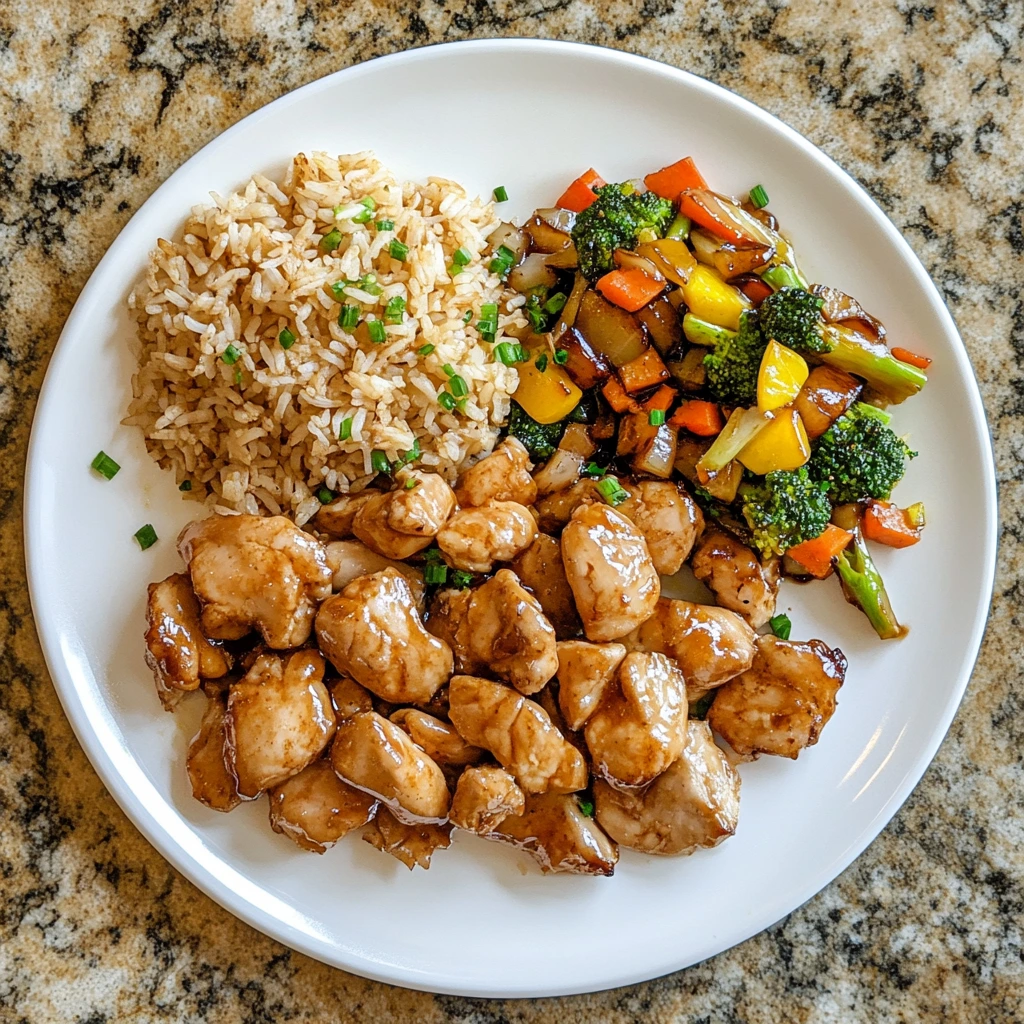
Add-Ins & Variations to Keep It Fresh
If you’re looking to change things up, this recipe is super flexible. Here are a few ideas to customize it to your taste:
-
Spicy Kick: Add a pinch of red pepper flakes or a small squirt of sriracha to the butter-soy mixture.
-
Ginger Twist: Add a teaspoon of freshly grated ginger along with the garlic for a brighter flavor.
-
Teriyaki Style: Replace the soy sauce with teriyaki sauce for a sweeter, thicker glaze.
-
Protein Swap: This recipe works great with shrimp, steak, or even tofu. Just adjust the cooking time accordingly.
Juicy Hibachi Chicken: FAQs & Final Thoughts to Finish Strong
We’ve gone through the sizzling steps, saucy details, and flavorful tips to help you master Juicy Hibachi Chicken at home—and now it’s time to answer some of the most common questions that come up when folks try this recipe for the first time. Whether you’re wondering about storage, substitutions, or how to make it even better, I’ve got you covered.
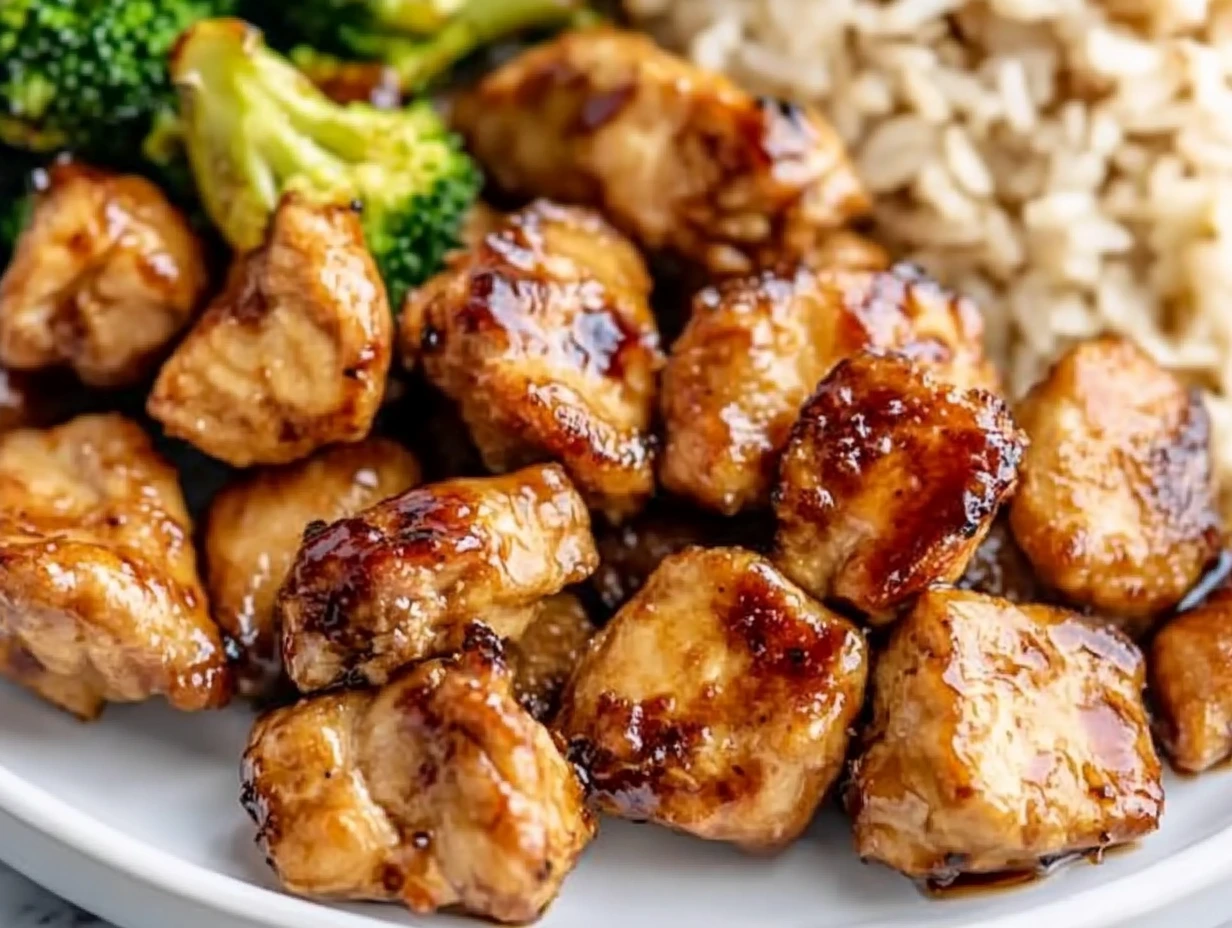
Frequently Asked Questions
1. Can I use chicken thighs instead of chicken breasts?
Absolutely! Chicken thighs are a great option if you prefer a juicier, more flavorful cut. Just make sure they’re boneless and skinless, and cook them the same way—cut into bite-sized pieces and seared over high heat. You might need to add a minute or two to the cook time.
2. How do I store and reheat leftovers?
Leftovers can be stored in an airtight container in the fridge for up to 3 days. To reheat, just toss the chicken in a hot skillet with a splash of water or soy sauce until warmed through. You can also microwave it, but reheating on the stove helps keep that seared texture.
3. Can I make this recipe ahead of time?
This recipe is best served fresh off the skillet, but you can prep the chicken earlier in the day—just cube it, season it, and refrigerate until you’re ready to cook. You can also make the dipping sauce ahead of time and keep it chilled.
4. What can I use if I don’t have sesame oil?
Sesame oil adds a lot of flavor, but if you’re out, you can just use extra vegetable oil. If you still want a hint of sesame, sprinkle some toasted sesame seeds on top before serving.
5. Is this recipe gluten-free?
As long as you use gluten-free soy sauce (like tamari or coconut aminos), the chicken itself is gluten-free. Just double-check your ingredients, especially if you’re making the dipping sauce.
6. Can I double the recipe for a larger group?
Definitely! Just be sure to cook the chicken in batches so you don’t crowd the pan. Overcrowding can cause the chicken to steam instead of sear, which affects both texture and flavor.
7. What kind of pan works best?
A large skillet or flat griddle works perfectly. If you have a cast-iron pan, even better—it holds heat well and gives that great sear. Non-stick pans will work too but might not brown the chicken quite as nicely.
Final Thoughts: Bring the Steakhouse Experience Home
There’s just something so satisfying about creating a restaurant-style meal in your own kitchen—especially when it’s this easy and packed with flavor. This Juicy Hibachi Chicken is one of those recipes that checks all the boxes: quick, affordable, versatile, and just plain delicious. Whether you’re pairing it with fried rice, loading it into bowls, or serving it up with sautéed veggies, it’s a meal that always gets rave reviews in my house.
Print
Juicy Hibachi Chicken
- Author: Sophia
Description
This Juicy Hibachi Chicken brings the sizzling flavors of your favorite Japanese steakhouse right into your kitchen. It’s tender, garlicky, and infused with savory umami flavor, seared to perfection and ideal with a side of fried rice or sautéed vegetables. A simple, bold dish that’s quick enough for a weeknight but special enough for guests.
Ingredients
For the chicken:
2 large boneless skinless chicken breasts, cut into bite-sized cubes
1 tablespoon vegetable oil
1 tablespoon sesame oil
1 tablespoon soy sauce
1 tablespoon butter
1 teaspoon garlic, minced
Salt and black pepper to taste
For the dipping sauce (optional):
¼ cup mayonnaise
1 tablespoon ketchup
1 teaspoon sugar
1 teaspoon rice vinegar
½ teaspoon garlic powder
1 tablespoon water
Instructions
Heat a large skillet or flat griddle over medium-high heat. Add vegetable oil and sesame oil, allowing them to heat until shimmering.
Season the chicken with salt and pepper. Add the chicken to the skillet in a single layer and sear without moving for 2-3 minutes to develop a golden crust.
Stir and continue cooking the chicken for another 3-4 minutes until it is almost cooked through.
Add the butter, garlic, and soy sauce. Stir well to coat the chicken evenly and cook for another 1-2 minutes until the chicken is fully cooked and glazed in the sauce.
If using the dipping sauce, whisk together mayonnaise, ketchup, sugar, rice vinegar, garlic powder, and water until smooth. Serve on the side.
Notes
For extra juicy results, let the chicken rest briefly before slicing and cooking. This dish is best served hot off the skillet. Pair it with hibachi-style fried rice, grilled zucchini, or steamed broccoli for a complete meal. The optional dipping sauce, inspired by the classic Japanese “yum yum” sauce, adds a creamy, tangy contrast to the savory chicken.

